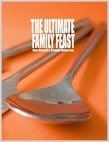A fruit cake for all

I think I was rather spoilt in my childhood. Growing up in Far North Queensland, the fruit of the gods were on my doorstep. Every type of exotic fruit was not exotic to me. It was just a part of life. Such fruits include lychees, papaya, star fruits, custard apples and the most celebrated of all exotic fruits: the mango.
Where a box of mangoes and a very full bag of lychees would cost $10 for both, it was easy to be spoilt. And when, for a couple of seasons my brother picked mangoes on a farm that grew produce especially for the Japanese market, I was in seventh heaven. B-grade produce meant a single black spot on the skin - something that a consumer paying $1000 per box of 12 does not want to see. Although I don't personally see the point in paying so much for a fruit, it was all the better for me.
In mango season, it was not beyond me to eat 2 to 3 mangoes per day. I would carefully estimate where the seed would be and slice off each cheek. The flesh would then be sliced into a slanted grid on each side and the skin removed from the seed. Over the sink I would invert the cheeks and suck off each "mini-block" of mango. The juice would be across my mouth and make its way down my fingers to the tips of my elbows and drip into the sink. Last, but not least, the seed would be attacked, making sure that every possible bit of fruit was removed from the seed. Once, I even dried the seed for several months, planted it and grew my own non-fruiting mango tree.
I always believed that this fruit was too good to cook with. That was until I became disillusioned with the fruit when I left my home territory. I was scared to even taste the foreign mangoes in the fear of disappointment. And for the most part, I have been let down. I selfishly bought a very expensive mango in Finland (a country not well known for exotic fruits) and was, in turn, disappointed with the not so soft, flavourless flesh. I tried again in the US which provided me with edible mangoes but none compared to the home grown FNQ varieties. I've given up trying to match those at home, but don't feel so blasphemous when I use them in cooking.
This will go down as one of my favourite fruit cake recipes of all time. I will be able to eat it guilt free my whole life. Given to me by my father's partner, Sharon, this cake is moist, soft and tasty without the use of butter or sugar. This would be a great cake for a diabetic or someone that's watching the calories.
Mango Fruit Cake
425 gram can of mango slices
5oo grams mixed dried fruit
1/2 cup water
1 1/2 teaspoons baking soda
1 1/2 cups flour
1 1/2 teaspoons of baking powder
2 eggs, lightly beaten
icing sugar mixture & lemon slices to decorate
Drain the mangoes by pouring the juice into a large pan. Chop the mango slices. Add the mangoes to the pan with the juices. Mix in the dried fruit and water. Bring to the boil and simmer, uncovered, for 1 minute.
Remove from heat and allow to cool.
Stir in combined sifted soda, powder and flour. Mix well and add the eggs. Stir until well combined. Pour mixture into a nonstick loaf pan.
Cook in a moderately slow oven (160 degrees Celsius) for about 1 hour, or until and skewer comes out cleaned when put into the cake. Cool the cake in the pan. Serve cake dusted with icing sugar, decorate with lemon slices. You can also serve fruitcake as is, tastes just as great.
If you wish to use fresh mango, use 2 large mangoes and 1 cup of water instead.




No comments:
Post a Comment